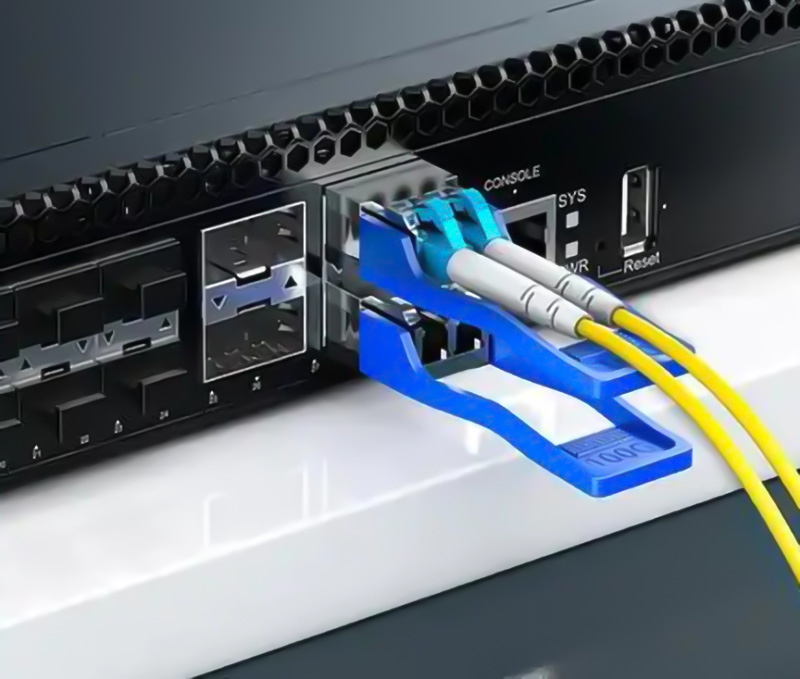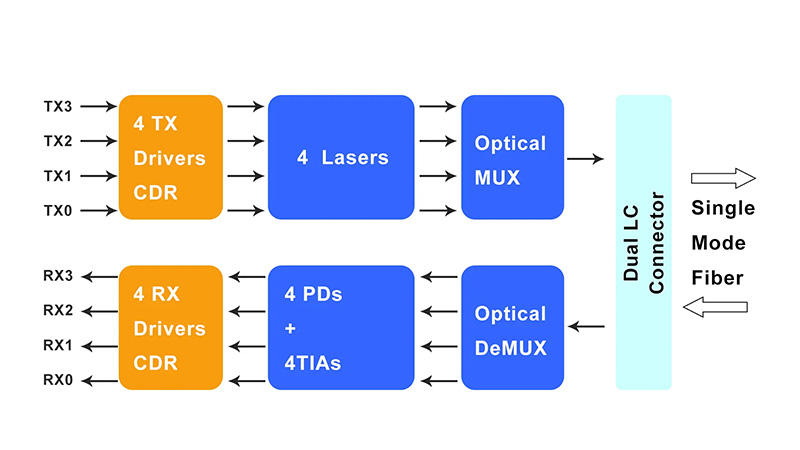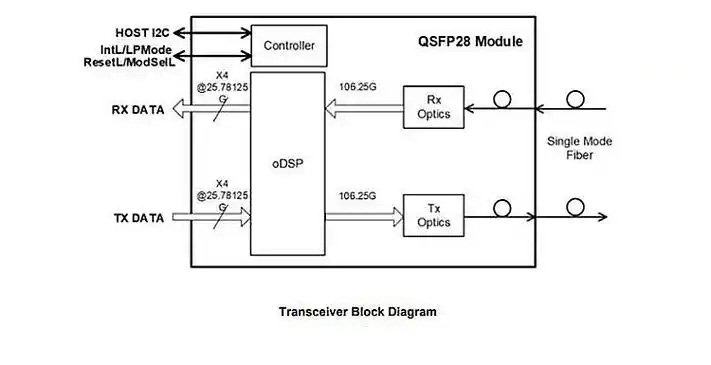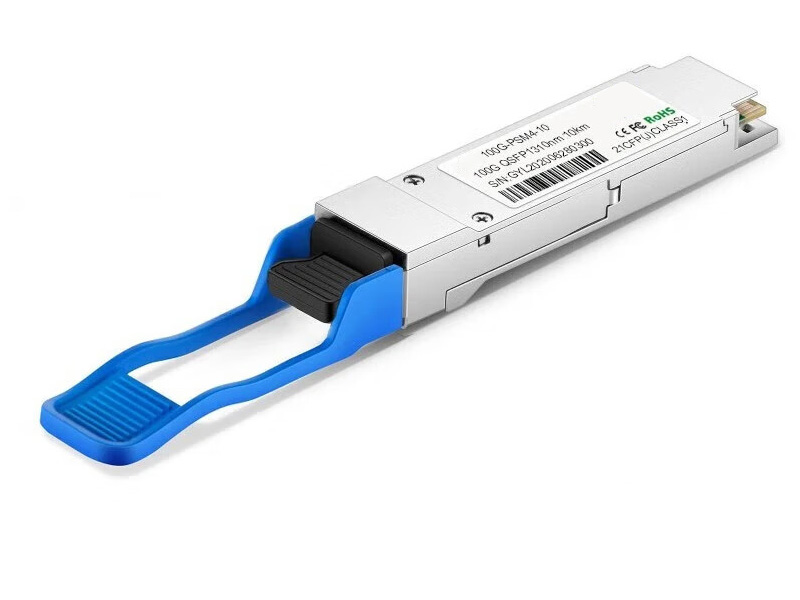How to Smoothly Upgrade to QSFP28 100G Optical Modules

Transitioning to 100G networks includes various levels of complexity and risk that organizations of any size can struggle with. Network upgrades to higher speeds involve considerable orchestration since service interruptions due to performance or compatibility issues will always take their toll. Thus, preparing for all risks must be a premeditated application of managing technical challenges while also prioritizing organizational needs.
Given the concise but detailed direction this article provides, I have created a methodology framework for successfully upgrading to QSFP28 100G optical modules in the form of action steps procedures. The article explains foundational ideas, dives into technical material, and recommends specific advice for physical installation. The article also offers case studies with metrics that will assist in making sound decisions and avoiding common pitfalls.
I hope that by following the action steps, readers will come away with an understanding of why a 100G upgrade is important, how to prepare their network resources, and best practices for implementing QSFP28 modules. The end result is a network resource that has the ability to scale for the foreseeable future with limited disruption and return on investment.
Why Upgrade to 100G? Business and Technical Drivers Explained
The increase in digital data has stretched network capabilities to their limits. We see bandwidth requirements growing rapidly as new applications require more capacity, like AI, cloud computing, and streaming. Existing connections, such as the more traditional 10G and 40G, can be difficult to manage and can bottleneck the entire process.
Bottlenecks slow messaging and increase latency, which doesn’t work for a number of applications and services, especially if they are mission-critical. Thus, we are feeling immediate pressure to upgrade infrastructure that will make the network faster and more scalable.
Latency is critical in applications that require real-time feedback (e.g., financial trading and video conferencing). Increasing speeds results in shorter travel times for data; data distance is one of the factors that impact responsiveness. Further, the requirement to scale to accommodate an increase in the number of users, devices requires seamless infrastructure upgrades that do not require frequent upgrades that are often expensive.
QSFP28 modules can help by delivering 100G speed over a more compact and power-friendly form factor. The QSFP28 module can leverage either multiple 25G lanes or older forms of 10G lanes that become a single interface. This change alone can reduce management and complexity of changing the speed of the network.
Other advantages of using QSFP28 modules are higher data capacity for existing cabling, increased energy efficiency, and backward compatibility with speeds lower than 100G in the event of phased upgrades. Essentially, upgrading to 100G with QSFP28 allows for greater flexibility to meet business demand and complicated technical requirements.
It allows the extension of a network to happen in a more fluid manner with lower latency and improved performance overall while preparing infrastructure for innovation down the road and optimizing costs. Key Factors:
- Bandwidth demands are soaring beyond 10G/40G systems.
- Latency improvements are key to improving real-time applications.
- Network growth requires flexible scalability.
- QSFP28 achieves 100G speed with efficiency and compatibility.
This upgrade strategy is essential if a business is going to be able to remain competitive with a reliable, scalable, and high-speed networking infrastructure.

What Is QSFP28? Key Features and Critical Components Uncovered
The QSFP28 module is a small, hot-pluggable transceiver that supports high-speed data transfer at 100 Gigabit Ethernet (100GbE). You can think of it as a substantial bridge that can deliver multi-lane data, combining them into a compact flow. The QSFP28 delivers a total throughput of 100 Gbps by using 4 lanes of data at 25 Gbps each, which represents a significant advance compared to earlier generations.
In terms of size, the QSFP28 is nearly identical to the QSFP+ form factor but achieves superior performance along with power efficiency, typically ranging from 3.5 to 4.5 watts. Hot-pluggable means modules can be added or removed without the need to power down devices, allowing for network upgrades while minimizing device downtime.
When comparing QSFP28 vs QSFP+, the major differences are speed and power. The QSFP+ provides 40G by using four 10 Gbps lanes. A QSFP28 module is an upgrade to four 25 Gbps lanes for a total throughput of 100G, with no change in size or connector interface.
The old-style QSFP+ slot will be backward compatible with the QSFP28 module when using adapters or controlled firmware for a smoother transition. The QSFP-100G-LR4 module is noteworthy for long-reach applications. It supports four separate channels, each on a separate wavelength via four parallel photodetectors, multiplexed over single-mode fiber, allowing a distance of 10 km to be achieved.
Like other LR modules, LR4 modules are connected to LC duplex connectors and are excellent for enterprise backbone links, as well as data center interconnects that require long reach with low latency. Fiber compatibility is essential: multimode fiber for distances up to 300m with SR4 modules, and LR4 modules that run on single-mode fiber (2 km or longer).
This modular pruning allows network architects to build deployments to suit their use case. In summary:
- QSFP28 has four 25 Gbps lanes to achieve a 100G speed.
- It is the same size as the QSFP+, but at a higher data rate and better power efficiency.
- Supports hot-pluggability with backward compatibility options.
- QSFP-100G-LR4 module supports single-mode fiber distances up to 10 km.
- There are various fiber types/distances according to the modular series (SR4, LR4).
This architecture provides a proper balance of performance, compatibility, and deployment flexibility for efficient 100G upgrades in various enablement scenarios.

How to Evaluate Your Current Network and Plan a Phased QSFP28 Upgrade
Transitioning to QSFP28 100G modules requires a thorough assessment of network resources. A checklist detailing hardware, firmware, cabling, and module compatibility can help make the process easier.
Start by assessing hardware. Make an inventory of all the switches, routers (e.g., leaf or spine), and transceiver slots, and identify the ones that are 100GbE-compatible versus those that need to be upgraded. Once you fulfill hardware requirements, review firmware compatibility. As it is possible for some devices not to recognize QSFP28 modules due to the firmware being too outdated, you want to make sure your switches and routers can run the most recent firmware to take advantage of all the module capabilities.
Next, an inspection for cabling needs to happen as well. You may need to confirm fiber type and quality. For example, you will want to ensure you are using single-mode fiber for LR4 modules if you are deploying over a long-distance transmission.
You will want to make sure you are using multimode fiber for SR4 modules for shorter runs. In some cases, just the condition of the cabling or connectors may need replacement to prevent any signal loss or errors from occurring.
Lastly, plan a phased upgrade approach to minimize downtime. Moving forward, upgrading the core segments of your network, and doing so in a phased manner starting from segments with the greatest bandwidth need, will minimize overall downtime and minimize service interruptions from service going down. You can also perform tests and validation after each phase of the upgrade.
During the transition, make sure to also have rollback procedures in place should things not work out, and maintain legacy modules. Verifying compatibility prior to deployment provides the opportunity to avoid any application disruptions. The following are key evaluation points that help determine compatibility with the modules:
- Take an inventory of equipment, including height and QSFP28 support.
- Ensure the correct firmware version is loaded to support module requirements.
- Audit all fiber types to meet specifications for SR4 and LR4.
- Schedule the rollout of upgraded modules in stages that align with business priorities.
- Include fallback options for simple recovery processes, should the upgrade not work according to expectations.
A systematic evaluation of the items above with a phased implementation process allows for a robust 100G upgrade process that can integrate into an operational environment with minimal impact on operations, while simplifying the process with a rollback process if necessary.
How to Implement QSFP28 Module Installation, Configuration, and Troubleshooting
To install a QSFP28 module, you need to follow a few key business processes. First, you should remove the module from the antistatic tray and peel off any dust covers from the module and the port of the device beforehand. Once this is done, while holding the module by its sides, you should gently insert it into the port until you hear a click to confirm that it has been securely inserted.
Since the QSFP28 modules are hot-pluggable, there is no need to power down the device, which helps minimize the disruption to the network while the modules are being changed out. Next, you’ll need to connect the appropriate fiber optic cables to the module. Ensure that you connect the fiber to the port on the transceiver that matches the port the fiber optic cable will be connected to.
You will also want to ensure these connections are tightly secured to the device. Turn on the device or verify that it is on (if it was already powered). The next step is to verify that the link activity LEDs are on, which will confirm communication with the module.
If no link is available, you’ll want to verify cable connections and check that the cable is working. The final step when installing a QSFP28 module is to configure it. As mentioned previously, you’ll want to ensure that the device has the latest firmware installed since you’ll want the device to be properly enabled, and also to provide the capabilities of the module.
If the device is a switch, you may have to enable the 100G interface or make sure that other port settings are configured correctly based on the required specifications of the transceiver. When troubleshooting QSFP28 challenges, you will find that compatibility, power, heat, and signal integrity issues are often a major focus.
If your device does not recognize the QSFP28 module, verify that your device is running firmware that is QSFP28 compatible and that the module is within your device’s specifications. Power issues can cause modules to reset or not perform at expected values, so make sure your power budgets are sufficient.
Heat management is important. Poor heat management or improperly cooling the heat sink will most likely lead to reduced life or reduced performance. Modules should be monitored in system management tools to track heat, and your equipment chassis should be reviewed for sufficient airflow.
Signal integrity issues are usually caused by degraded cables or compromised connectors and should be checked and tested regularly. Here is a summary of common problems and quick checks:
- No link: Reseat the module, ensure cables are intact, update the firmware, and ensure compatibility.
- Intermittent connection: Look for excessive bends in the fiber, clean connectors, and run diagnostics.
- Throughput lower than expected: Check for network congestion or update the firmware.
- Module not recognized: Update firmware and ensure vendor compatibility.
Completing the steps and checks above will make the QSFP28 installation go smoothly, and you will be able to tackle many of the common challenges of a 100G upgrade. The goal is for high-speed networks to be reliable and efficient.

How to Ensure Smooth Transition Using Compatibility and Breakout Strategies
The transition to QSFP28 is a process of maintaining service continuity while new and legacy modules are implemented in coexistence—this means the network will run legacy transceivers alongside QSFP28 (bi-directional optics), all without impacting service and functionality. The benefit of this process minimizes risk and allows for planned migration instead of a forced swap.
Breakout cables divide a QSFP28 port or 100G interface into 10G or 25G SFP+ or SFP28 interfaces. This inherent flexibility creates connection opportunities and allows service teams to utilize existing lower-speed devices without incident, all while continuing to invest in upgraded equipment.
Adapters facilitate compatibility between disparate generations of modules or different connector types. When these two tools are utilized, users can be certain of the integrity in service and quality of performance they receive, achieving the goal of avoiding service and performance interruption.
Here are pertinent nuggets of wisdom to leverage in your 100G transition:
- Phased migration: Use legacy and new modules in tandem to phase in new systems. As volumes grow, you can gradually redevelop volume with 100G-capable interfaces.
- Use breakout cable solutions: Quickly deploy connection capabilities to lower-speed devices with minimal service interruption.
- Use adapters correctly: Adapters can facilitate legacy-to-new interfaces, as well as connector types.
The ultimate goal in the implementation of these tools is to smooth the transition to QSFP28 in a 100G project in an economically responsible and timely manner while continuing to maintain uptime in the network and service.
What Can We Learn from a Real-World Smooth QSFP28 Upgrade Case?
A large, multinational corporation has recently migrated from 40G to 100G networks, utilizing QSFP28 modules in a successful enterprise-grade upgrade. The enterprise had been struggling to increase bandwidth because of digital transformation and an increase in the volume of data being processed on the network. The migration to 100G ensured they would be able to service the growing demands of the business while ensuring that all users experienced low latency and high reliability.
The biggest challenge was to integrate the QSFP28 modules into the existing network without disrupting existing service. By diligently inventorying the existing network and implementing a phased upgrade, their downtime was limited. They were able to upgrade the firmware on all core devices to ensure that they were compatible with 100G, and used different breakout cables to allow both 40G and 100G links to coexist.
They conducted testing of both the signal integrity and thermal stability of the links under a variety of testing scenarios. After migrating to 100G, the enterprise saw improved performance of all their applications, better processing times, improved scalability of existing applications, and reduced operational costs offered by reducing complexity of hardware being deployed and less overall energy consumption to service decreased traffic on the network.
Lessons learned from this case included the value of planning down to the detail, a phased implementation, and using a breakout strategy to generate uptime for users. Takeaways:
- Implementing a phased migration lessens the risk of service interruption.
- Any device should have its firmware and hardware checked before being connected to the main network.
- Breakout cables allow old and new modules to coexist.
- Testing in real-world labs helps determine reliability before full deployment into production.
This case illustrates how a well-thought-out plan to migrate from 40G to 100G with QSFP28 connectors ultimately resulted in a true business asset, while addressing some of the usual pain points that come with migrating to 100G.

How Do QSFP28 LR4 Modules Perform? Exclusive Comparative Test Data
QSFP28 LR4 modules are well-known for reliable 100G data transmission over long distances. As we found, lab tests confirmed that QSFP28 LR4 modules support reliable 100G throughput over at least 10 km of single-mode fiber interface, adhering to common standards for 100GBASE-LR4 transmission. The long distance covered is vital for both data center and telecom networks spanning physically large distances.
The error rates for these modules remain extraordinarily low in a range of environmental conditions; they demonstrate reliable, error-free data flow. Power consumption measures somewhere in the range of 3.5 to 4 watts, illustrating an efficient use of energy that is crucial for large deployments.
Thermal stability tests show that you can expect QSFP28 LR4 modules to reliably work at high performance across wide temperature ranges, usually between -5°C and 70°C, without degrading the module’s performance. Proper dispersal of heat and proper cooling support systems can extend the life expectancy of your QSFP28 LR4 modules and the reliability of the network connections.
Comparative testing on competing LR4 models shows that there is not much difference in terms of overall power draw and wavelength stability, but all models adhered closely to industry standards such as the Multi-Source Agreement (MSA), so models advertised to be compatible should work across vendor products with relatively the same performance. Performance highlights:
- Transmission distance up to 10 km on a single-mode fiber
- Minimal error rates ensure reliable data accuracy
- Power-efficient, as most modules consume less than 4 watts
- Stable operation across wide temperature variations
The performance highlights above can help narrow down and accurately support finding the right QSFP28 LR4 module that will fit your network requirements, avoiding possible over- or under-specifying any particular device for your application. This type of data-driven insight can help us make decisions about using a reliable 100G LR4 solution that performs without fear of falling out of performance standards.
How to Future-Proof Your Network Post-QSFP28 Upgrade
Planning for the future following a QSFP28 upgrade is an essential part of protecting your investment in the network. New standards, such as QSFP56 and QSFP-DD, are on the verge of being introduced and will offer an avenue for scaling bandwidth beyond 100G. The QSFP56 can run at 50 Gbps per lane, for a total of 200G per module, and QSFP-DD provides up to 400G of bandwidth with an 8-lane interface and the same form factor size as the QSFP28.
Both standards will also be backward-compatible with the QSFP28, so you can add more bandwidth capacity without necessarily needing to do an infrastructure overhaul. This compatibility means your network will always have future flexibility, and some growth planning can be done together.
Recommendations for effective future-proofing:
- Purchase the device with QSFP28 plus QSFP56 or QDD appropriate slots.
- Keep an eye on bandwidth usage and evolving demand, and think of a phase in which you will be available for upgrades.
- Remember to consider power efficiency versus performance and ensure it is being priced into your modules.
By taking adaptive upgrades and designing plans around backward-compatible standards, you will benefit in resiliency, scalability, and cost-effective deployment for years to come. You can also protect your initial 100G investment from becoming obsolete.
Conclusion
The QSFP28 module has become the backbone of a successful upgrade path to 100G networks as a space-efficient, power-efficient, high-speed medium to support the demands of increasing bandwidth in data center or enterprise networks without having to replace all of your existing network infrastructure. The QSFP28 module does this by supporting 100G speeds across four 25G lanes, which is a tremendous asset for data centers or enterprise networks that are looking for a way to scale their networks toward future demand.
A successful upgrade to QSFP28 requires careful planning, including checking for compatible hardware and then attention to detail during the installation and configuration process. There will be issues that need attention—compatibility checks, thermal management, and rolling out network options in phases are just a few areas that need to be analyzed and tested to make that all-important step up to higher capacity without interrupting business processes.
Once you understand the details of moving to the QSFP28, you will have taken a major step to fully utilize the upgrade at every opportunity or expectation. For your future reference, there will be data, case studies, and examples of practical solutions to some of the common pitfalls or weaknesses that can occur during the upgrade that will help ensure upgrade success while also maximizing both reliability and ROI.
This strategy prepares the QSFP28 module to be the real base technology that supports upgrading your network ecosystem while meeting your demands and preparing the network for future high-speed upgrades to meet the next generation of connectivity solutions.
